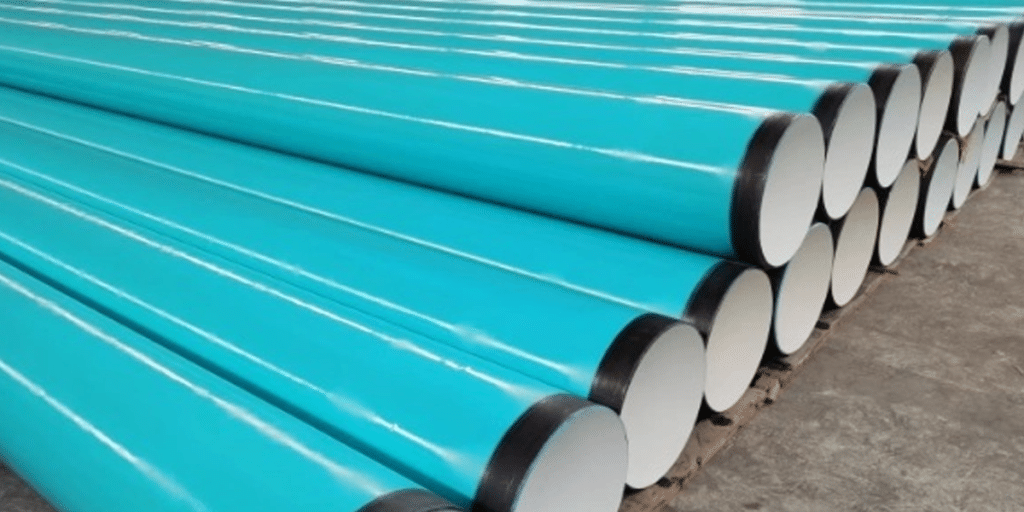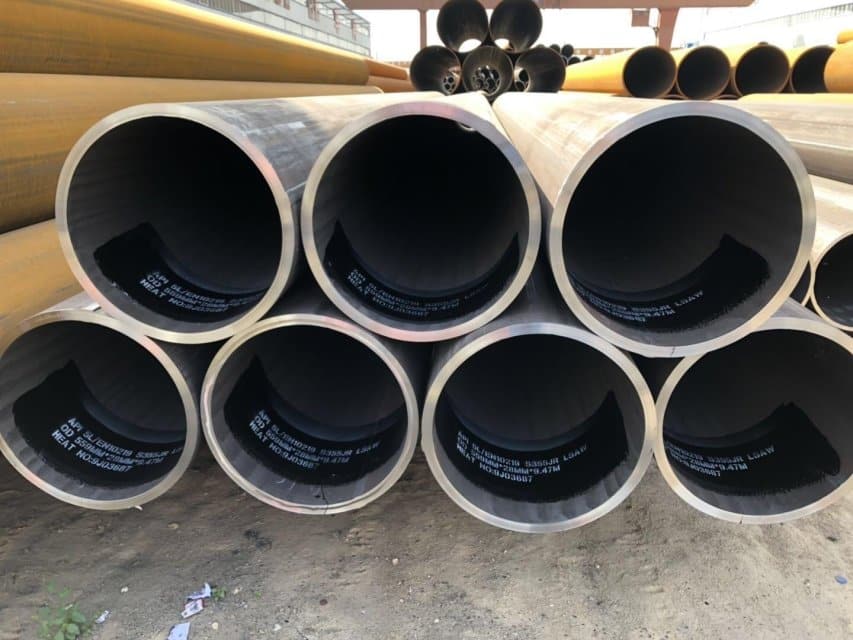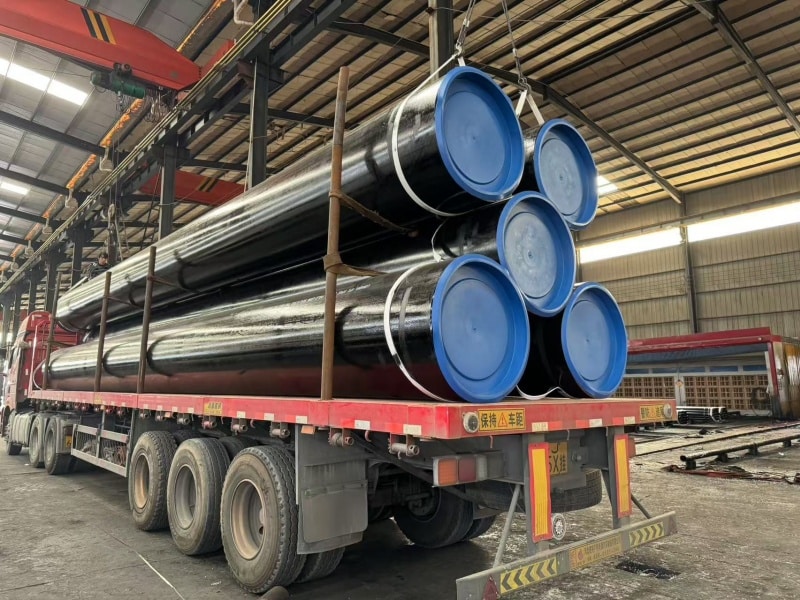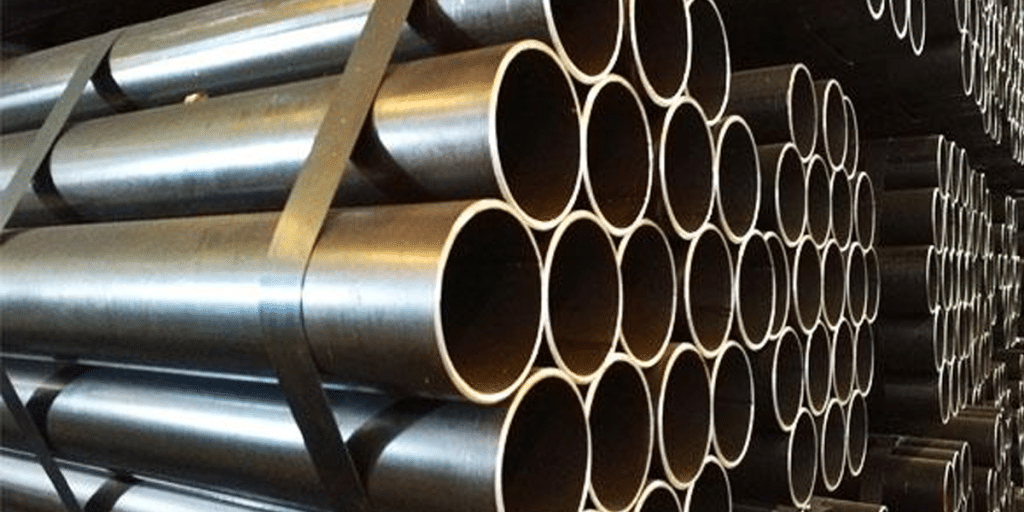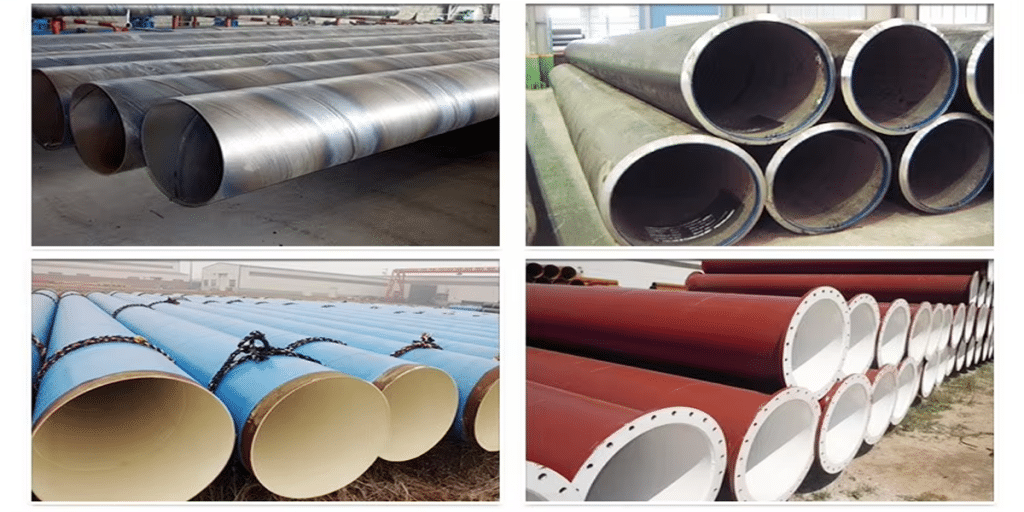With the rapid expansion of global energy infrastructure and high-pressure transmission systems, the optimization and standardization of pressure pipe steel manufacturing steps have become a focal point in the industry. As a critical material widely used in oil, gas, power, and chemical sectors, ASTM A672 steel pipes are increasingly favored by manufacturers and engineering firms for their excellent pressure resistance and structural reliability. In high-demand applications where safety and reliability are paramount, ensuring that each pipe complies with the ASTM A672 welding procedures and A672 inspection standards is essential for quality assurance. In recent years, advancements in automated welding technologies and intelligent inspection systems have significantly improved the efficiency and consistency of electric arc welded steel pipes, further driving technological innovation in the field.
This paper provides a systematic analysis of the ASTM A672 manufacturing process, exploring key stages from welding techniques and heat treatment control to inspection and testing, and examines the technical challenges and development opportunities in modern engineering applications.
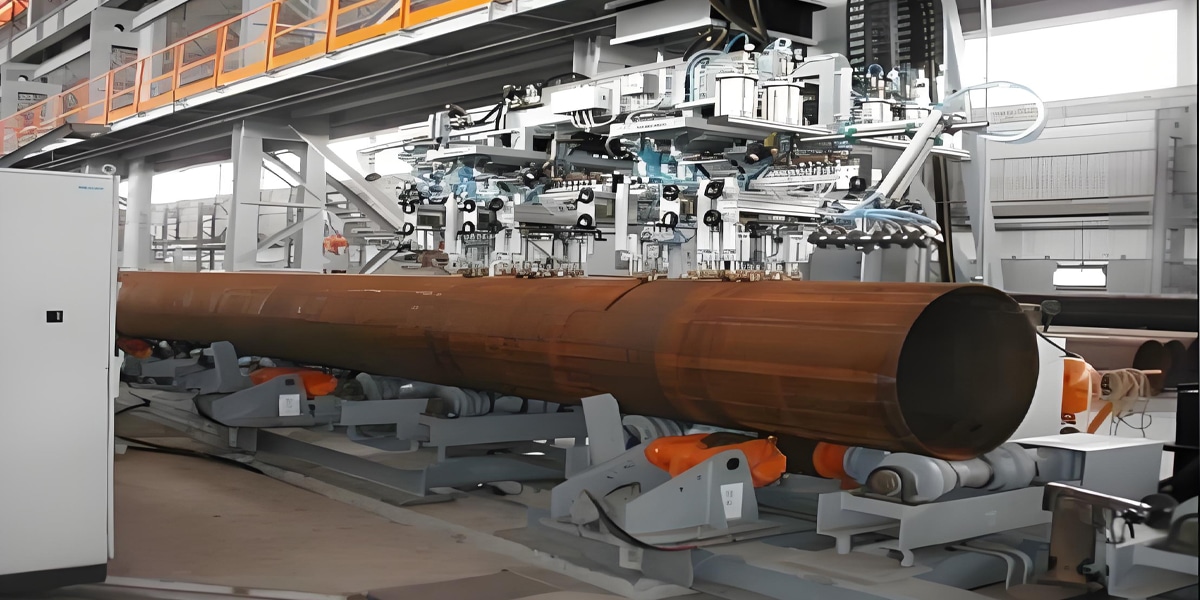
Brief Overview of the ASTM A672 Steel Pipe Standard
ASTM A672 is a standard established by ASTM International for electric arc welded steel pipes intended for pressure applications, particularly in medium- to high-temperature service environments. This specification covers pipe fabricated from pressure vessel quality plate, which is welded and heat-treated to meet specific mechanical requirements.
1. Scope of Application
The ASTM A672 standard applies primarily to steel pipes used in pressure transmission systems, such as power plant boilers, heat exchangers, and high-pressure gas pipelines. These pipes are typically thick-walled, large-diameter welded products formed from steel plates or coils and subjected to post-weld heat treatment to ensure structural performance.
2. Material Grades and Classifications
ASTM A672 pipes are classified based on the grade of the base plate material, such as Grades C60, C65, and C70. Higher grades generally offer greater yield strength and tensile strength. For example:
Grade C60: suitable for general medium-temperature applications
Grade C70: suited for higher pressure or elevated temperature service
3. Key Manufacturing Processes
The production of ASTM A672 pipes typically involves the following major steps:
Plate preparation and forming
Electric arc welding process (commonly single or double submerged arc welding)
Heat treatment (such as normalizing or normalize-and-temper)
Weld seam grinding and inspection
These steps form the complete ASTM A672 manufacturing process, ensuring dimensional accuracy as well as the metallurgical and mechanical integrity of the weld zones.
4. Inspection Requirements
ASTM A672 also specifies strict inspection protocols, including:
Nondestructive testing standards (such as radiographic testing (RT) or ultrasonic testing (UT))
Mechanical property tests (tensile and impact tests)
Dimensional and visual inspection
Hydrostatic testing (where applicable)
Detailed Manufacturing Process of ASTM A672 Steel Pipes
ASTM A672 steel pipes are primarily used for pressure applications and are fabricated through electric arc welding followed by heat treatment. The entire production process requires strict control over multiple critical stages to meet the safety and performance standards expected of pressure pipeline steel manufacturing steps. Below is a comprehensive breakdown of the typical manufacturing flow:
1. Raw Material Preparation (Plates or Coils)
The process begins with the selection of pressure vessel-quality steel plates, such as ASTM A516 Gr. 60/70. The raw material must have good weldability and adequate strength, and is inspected for both chemical composition and mechanical properties.
Thickness and surface quality check
Cutting into appropriate dimensions
2. Plate Forming
The cut steel plates are formed into a cylindrical shape using rolling machines. This is done using cold or hot bending techniques, typically employing UOE or JCO forming processes.
Control of roundness and edge alignment
Pre-bending for weld fit-up
3. Electric Arc Welding
As per the standard, submerged arc welding (SAW) is used for ASTM A672 pipe fabrication. Depending on the wall thickness, either single-side or double-side welding is performed. This is the core stage where structural integrity is established.
Internal and external weld passes (can be done simultaneously)
Welding parameters must match the steel grade specification
Post-weld grinding and smoothing
4. Heat Treatment
Welded pipes undergo heat treatment to refine microstructure, relieve residual stresses, and improve weld toughness. Common methods include:
Normalizing
Normalize and temper
Air or controlled cooling post-heat treatment
5. Straightening and Shaping
The heat-treated pipes are passed through mechanical straighteners to correct ovality, curvature, and ensure dimensional conformity.
6. Non-Destructive Testing (NDT)
ASTM A672 requires thorough non-destructive testing (NDT) on weld seams. Common NDT methods include:
Ultrasonic Testing (UT)
Radiographic Testing (RT)
Magnetic Particle Testing (MT) for surface defects
7. Hydrostatic Testing and Dimensional Inspection
Each pipe must undergo a hydrostatic pressure test to verify its pressure-holding capacity and leak integrity.
Test pressure based on standard or customer specification
Full check of inner diameter, wall thickness, and overall length
8. Surface Treatment and Marking
Pipes are treated with anti-corrosion coatings such as oiling or shot blasting, followed by marking with pipe number, grade, size, and heat treatment info.
9. Final Inspection and Dispatch
Before shipment, pipes undergo final inspection according to A672 inspection standards, followed by bundling, protective packaging, and documentation for dispatch.

Inspection Procedures and Quality Control of ASTM A672 Steel Pipes
In pressure pipelines and critical equipment, the quality of ASTM A672 steel pipes is directly linked to the safety and operational stability of the system. Therefore, the inspection procedures and quality control system are stringent and comprehensive, spanning the entire manufacturing process to ensure that every pipe meets the design and standard requirements.
1. Incoming Material Inspection
Chemical Composition Testing: Using spectrometry to ensure the steel plates meet the specified elemental composition range.
Mechanical Properties Testing: Includes tensile strength, yield strength, and impact toughness tests to verify the steel’s mechanical criteria.
Visual Inspection: Checking the plate surface for cracks, inclusions, corrosion, and other defects.
2. In-Process Inspection
Forming Stage
Dimensional Inspection: Check the diameter, ovality, and wall thickness uniformity of the formed pipe.
Pre-Weld Inspection: Cleaning weld edges and verifying groove angle to ensure weld quality.
Welding Stage
Welding Parameter Control: Strictly recording welding current, voltage, speed, and other parameters to maintain stable welding processes.
Weld Appearance Inspection: Checking for surface defects such as porosity, cracks, undercut, and other weld imperfections.
3. Nondestructive Testing (NDT)
Radiographic Testing (RT): Detect internal weld defects such as slag inclusion, incomplete penetration, cracks, etc.
Ultrasonic Testing (UT): Used especially for thick-walled pipes and critical zones to detect internal flaws.
Magnetic Particle Testing (MT): Detect surface and near-surface defects on welds.
Penetrant Testing (PT): Identify fine surface cracks and other minute surface defects.
All defects must be repaired or the affected pipe rejected.
4. Mechanical Testing
Tensile Test: Verify tensile strength and elongation of the pipe and weld to meet standard requirements.
Impact Test (usually at low temperatures): Assess toughness and impact resistance.
Bend Test: Verify plasticity and forming quality of the weld.
5. Hydrostatic Testing
Each pipe must withstand a specified hydrostatic pressure test, with pressure and duration per ASTM A672 or contract requirements.
Verify no leakage or permanent deformation occurs in the pipe body or weld.
6. Final Visual and Dimensional Inspection
Dimensional Re-check: Confirm internal diameter, wall thickness, length, and straightness meet technical requirements.
Surface Treatment Inspection: Ensure uniform anti-corrosion coating without peeling; markings are clear and accurate.
Packaging Inspection: Confirm protective packaging to prevent damage during transport.
7. Quality Documentation and Traceability
Complete inspection reports, chemical analysis certificates, and test records must be archived for traceability.
Implement batch management with unique identification codes for each production batch.
Employ quality management systems (such as ISO 9001) to ensure continuous improvement.
8. Key Quality Control Focus
Develop detailed inspection plans and strictly enforce all testing standards, including A672 inspection standards.
Train qualified inspectors and use advanced testing equipment.
Implement strict controls on critical processes such as welding, heat treatment, and nondestructive testing to prevent hidden defects.
Promptly address and rectify any abnormalities to prevent non-conforming products from reaching the market.
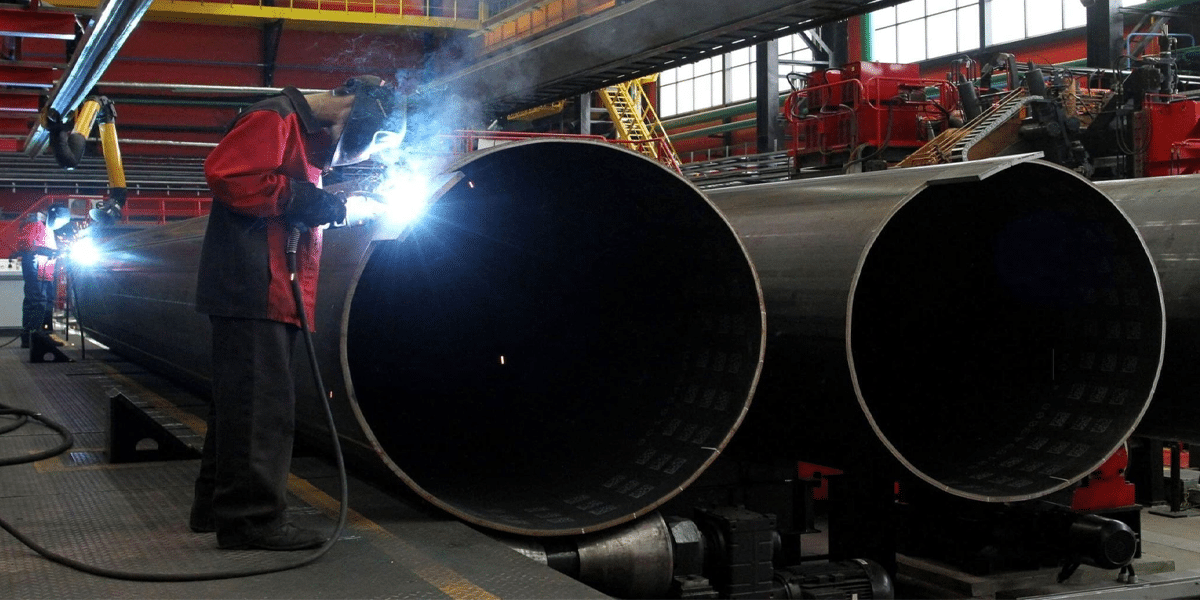
Key Quality Control Points in the Manufacturing Process of ASTM A672 Steel Pipes
ASTM A672 steel pipes are widely used in high-pressure and high-temperature environments. Therefore, it is essential to focus on the following key quality control points throughout the manufacturing process to ensure the mechanical properties, welding quality, and overall stability of the pipes.
1. Raw Material Quality Control
Steel Plate Quality Inspection: Use steel plates that comply with pressure vessel steel standards (e.g., ASTM A516), ensuring chemical composition and mechanical properties meet specifications.
Material Certification and Inspection Reports: Verify suppliers provide complete material certificates and inspection reports to ensure traceability and reliability.
Visual Defect Inspection: Check the plate surfaces for cracks, corrosion, inclusions, and other defects that could affect subsequent processing and welding.
2. Forming Stage Quality Control
Calibration of Forming Equipment: Ensure that rolling machines, straighteners, and other equipment operate within specified parameters to avoid shape deviations.
Dimensional Monitoring: Strictly control pipe diameter, ovality, and wall thickness tolerances to prevent assembly and usage issues.
Edge Preparation Quality: Ensure weld groove dimensions and shapes meet design requirements, which helps stabilize weld quality.
3. Welding Quality Control
Welding Procedure Specification (WPS): Develop and strictly adhere to welding procedures, specifying current, voltage, welding speed, and other parameters.
Welder Qualification: Ensure welders are certified and skilled.
Weld Parameter Monitoring: Continuously monitor welding parameters to guarantee sound weld formation without defects.
Defect Prevention: Detect and eliminate porosity, cracks, slag inclusions, and other welding defects to maintain weld integrity.
Post-Weld Cleaning and Grinding: Ensure weld seams are smooth to facilitate subsequent inspection and treatment.
4. Heat Treatment Process Control
Heat Treatment Parameters: Strictly control heating temperature, holding time, and cooling method to achieve uniform microstructure and stable properties.
Temperature Monitoring and Recording: Continuously monitor temperature throughout the process and keep records to ensure process compliance.
Equipment Calibration: Regularly calibrate furnace temperature uniformity to avoid local overheating or underheating.
Minimize Deformation: Use proper support and cooling control to reduce warping and deformation of pipes during heat treatment.
5. Nondestructive Testing (NDT) Control Points
Selection of Testing Methods: Choose appropriate NDT methods (RT, UT, MT, PT) based on pipe specification and wall thickness.
Qualified Inspectors: Ensure NDT personnel have relevant certification to guarantee reliable results.
Defect Identification and Evaluation: Rigorously classify defects per standards to ensure nonconforming products are repaired or rejected.
Equipment Maintenance: Regularly calibrate and maintain inspection equipment to ensure accuracy.
6. Mechanical Properties Control
Sampling and Test Frequency: Conduct sampling and mechanical tests per standard requirements to ensure representativeness.
Compliance with Mechanical Properties: Tensile, impact, and bend tests must meet ASTM A672 technical specifications.
Handling Abnormalities: Analyze causes of failures and adjust processes accordingly for nonconforming products.
7. Final Dimensions and Appearance Control
Dimensional Verification: Confirm final pipe diameter, length, wall thickness, and straightness conform to design and tolerance specifications.
Surface Anti-Corrosion Treatment: Ensure coatings are uniform and free of peeling to prevent corrosion.
Marking Compliance: Ensure product markings are clear, including specifications, batch number, and manufacturing information for traceability.
8. Quality Documentation and Traceability Control
Complete Records: Maintain comprehensive records of inspection and test data for each stage, establishing quality archives.
Batch Management: Implement batch control to ensure traceability of any defective pipes back to their production source.
Continuous Improvement: Use quality feedback to improve manufacturing processes and control measures.
In summary, the manufacturing process of ASTM A672 steel pipes covers every critical stage from raw material inspection to final product delivery. By strictly implementing quality control measures throughout the ASTM A672 manufacturing process—especially the welding techniques for arc-welded steel pipes and adherence to nondestructive testing standards—the mechanical properties and structural integrity of the pipes are ensured. Leveraging a well-established ASTM A672 welding procedure and a scientific heat treatment steel pipe flowchart, the produced pipes not only meet rigorous A672 inspection standards but also satisfy the high demands for safety and stability in pressure pipeline applications. Looking ahead, with continuous technological advancement, the pressure pipeline steel pipe manufacturing steps will keep optimizing to provide even more reliable support for various engineering projects!

